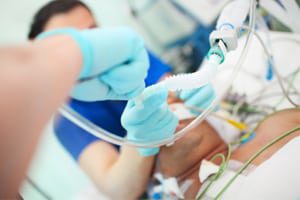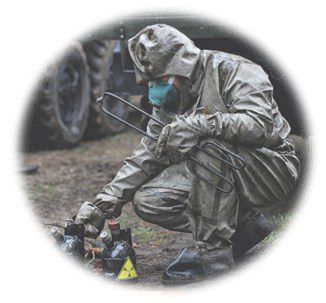
Most people recall where they were and what they were doing on 9/11 when terrorists attacked the World Trade Center on our own soil in New York. Not only was the attack traumatic for New Yorkers and the rest of the nation, but the attack also left thousands of individuals fighting deadly illnesses caused by […]

Most people recall where they were and what they were doing on 9/11 when terrorists attacked the World Trade Center on our own soil in New York. Not only was the attack traumatic for New Yorkers and the rest of the nation, but the attack also left thousands of individuals fighting deadly illnesses caused by exposure to toxic substances emitted because of the tragic blasts. Unbeknownst to many people, many cancers and illnesses are latent, meaning they may not develop until years after exposure to toxic substances on 9/11. As such, the federal government, recognizing the need to help individuals who sustained serious injuries, illnesses, and death from 9/11, have established laws that allow qualifying individuals to seek and obtain compensation.
James Zadroga was a police officer in New York City who died in early 2006 from a respiratory disease he developed from exposure to toxic substances during the rescue and recovery effort following the 9/11 attacks. Mr. Zadroga’s death was the first death linked to exposure to toxic substances stemming from 9/11. It was only a matter of time before other first responders, employees, residents, and visitors in the area began to suffer from similar illnesses and diseases, such as various forms of cancer.

Following the 9/11 attacks, a September 11th Victim Compensation Fund (VCF) was established to provide compensation to individuals who suffered injuries and illnesses that were related to both the attack itself as well as recovery efforts. The original VCF was operational for only three years from 2001 to 2004. However, because many individuals developed 9/11-related illnesses and diseases well after 2004, like James Zadroga, President Obama recognized that the VCF must be extended for a much longer period.
In January of 2011, President Obama signed the James Zadroga 9/11 Health and Compensation Act of 2010 (Zadroga Act) into law. The Zadroga Act renewed the VCF to begin operation in October 2011, and to last for a period of five (5) years until October 2016. Because this five-year extension was not long enough, President Obama reauthorized the Zadroga Act in December of 2015, extending the VCF for another five years, to last until December 2020.

Recognizing a need to help injured and ill victims beyond 2020, the World Trade Center Health Program has been implemented to provide medical monitoring and treatment for first-responders, employees, residents, and visitors at or near the World Trade Center and other attack sites on 9/11 and shortly thereafter. The program will last until 2090, providing ample time and resources for victims to seek the medical monitoring and medical treatment they need and deserve. The WTC Health Program is particularly essential for individuals who develop cancers years after exposure to toxic substances related to the 9/11 attacks.
Victims of 9/11 might be eligible to receive compensation through the VCF if they were first responders, worked, lived or visited the area on the day of the attacks or shortly thereafter, sustaining injuries and illnesses from exposure to toxic substances stemming from the attacks. The zone of exposure is designated as the following areas in Manhattan:
The WTC Health Program has established specific guidelines for determining which categories of cancers qualify for coverage and the required “latency period” for each category. The “latency period” is the amount of time required from the date of exposure to the date of diagnosis of cancer. Victims of the 9/11 attacks, including first responders, employees, residents, and visitors in the zone of exposure at any attack site on the day of the attacks or shortly thereafter may qualify for compensation under the WTC Health Program if they have been diagnosed with the following categories of cancers and meet the latency period requirement:
Cancers typically do not develop immediately following exposure. As such, many victims of the 9/11 attacks do not know that cancer they later develop may be related to the attacks. All victims should be aware of how the Zadroga Act, the VCF and the WTC Health Program can help them receive compensation if they ultimately develop cancers and other diseases that are linked to exposure to toxic substances stemming from the 9/11 attacks.
If you or a family member has suffered cancer or other medical conditions related to 9/11, you should consider speaking with a qualified attorney about your situation. Contact Parker Waichman LLP today by calling (800) YOUR-LAWYER (968-7529) to schedule your free consultation to speak with one of our attorneys. Our firm has four locations in New York to help serve all victims affected by the 9/11 attacks.


